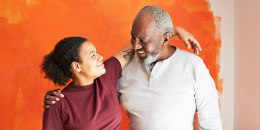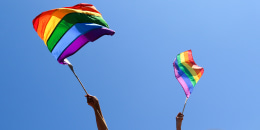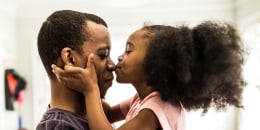If you took movies and TV shows seriously, witches, or those who practice witchcraft, would all be wearing pointy black hats, riding broomsticks and wickedly cackling over cauldrons.
Unsurprisingly, it's these stereotypes that have influenced essentially everything we think and know about witches, whether they're actually true or not.
In fact, these perceptions are so widespread that come October, it’s impossible to go anywhere without seeing witches on Halloween decorations or worn as costumes by trick-or-treaters and party revelers.
But is this kind of witch actually real? As in, the sort of mystical person who casts magic spells and dances beneath the full moon?
Yes and no. Beyond the commercialized versions of witches we've all been exposed to, there's more than meets the eye when it comes to those who practice witchcraft.
“Your average witch is just somebody who lives next to you and has this spiritual practice you don’t know about,” Deborah Blake, a self-identified witch and the author of “Llewellyn’s Little Book of Witchcraft,” tells TODAY.com.
Unlike today, the spiritual practices Blake is referring to were once the basis of persecution, resulting in the deaths of thousands of innocent men and women in witch trials that spanned centuries.
It's only in more recent history that Blake, and others like her, are able to openly participate in the rituals, spells and ceremonies that define their spirituality.
TODAY talked to the experts to better understand the beliefs of modern witches, as well as breaking down the origin of witch stereotypes in pop culture.
Here's everything to know on witchcraft, spells, magic, covens, broomsticks and more.
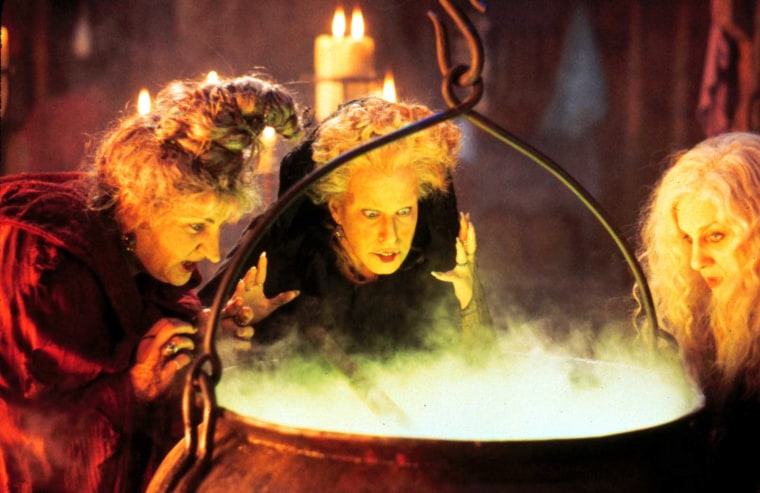
Modern versus fictional witches
"In general, when people talk about witchcraft as we see it in horror films or supernatural TV series, which often doesn't really bear much resemblance to the practice of witchcraft around this country," Alex Mar, journalist and author of the book “Witches in America," tells TODAY.com.
“Most of the time, when people are talking about actual practicing witches today, what they’re really talking about are pagans,” she explains. “Not every pagan will call themselves a witch, but a lot of them do work with different kinds of rituals and spells."
By definition, a pagan is someone who's spirituality and practices differ from more mainstream religions like Christianity and Judaism. Their beliefs are often earth-centered, as well as polytheistic, which means they worship multiples gods and/or goddesses.
According to Mar, there are currently around a million practicing pagans in the U.S. and part of what draws some of them into the religion is that, in a departure from more traditional Christian beliefs, females are allowed to be spiritual leaders instead of just males.
“It changes that power dynamic, and I think that’s part of what’s made it very attractive to a lot of people,” Mar says.
"I feel pretty real," says Blake. "I have been what we call 'out of the broom closet' for a very long time."
Blake says that among the reasons she writes books and shares her beliefs is to help increase awareness about the practices and traditions that define witchcraft.
"There is a lot of misinformation about witches and witchcraft out there," says Blake.
Unlike common stereotypes, Blake says being a witch is both a religion and a spiritual path. “It’s a way of looking at the world and how you live your life. It’s a nature-based religion, which means that a lot of it is connected to the cycles of the moon and the cycles of the year.”
"(Witchcraft) is very earth-centered," says Mar. "The earth is sacred. We're surrounded by life that is sacred, and witchcraft practices that are serious really spend a lot of time acknowledging, through ritual and ceremony, the different solstices and equinoxes and the changing of the seasons."
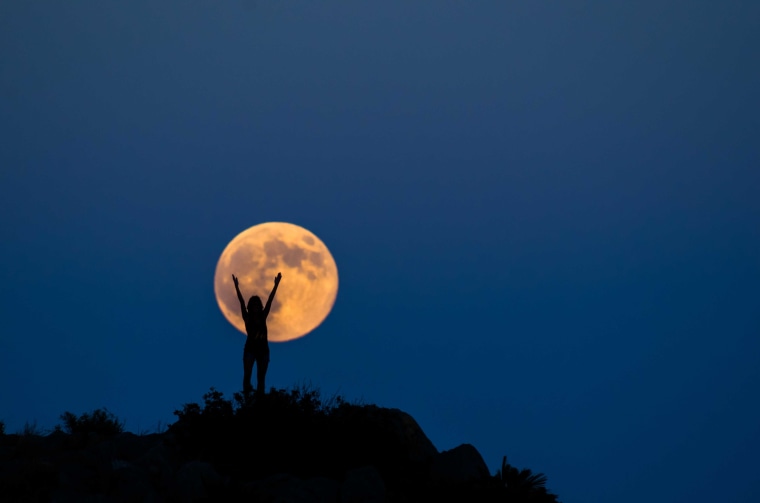
What's the difference between witches and Wiccans?
While many people use "witch" and "Wiccan" interchangeably, they aren't necessarily the same thing.
"Wicca is a branch of witchcraft," says Blake. "All witches are not Wiccans, although all Wiccans are witches."
According to Helen A. Berger, Ph.D, affiliated scholar at Brandeis University's Women’s Studies Research Center, Wicca, like witchcraft, is a form of paganism.
"Wicca is a religion whose beginnings go back to the UK in the 1930s," Berger tells TODAY.com. "There is a ritual calendar of the 8 sabbats that denote the beginning and height of each season."
Berger explains that Wicca is a religion "in which magic is part of the practice."
And witches?
"Witches are magic practitioners. They may or may not participate in the yearly cycle of the year," she says, adding that most of them do celebrate the seasons and moon cycles.
Another difference between Wiccans and witches is the Wiccan Rede, a credo dictating “Harm none and do as you will," which essentially means you're free to do as you please, unless it adversely impacts someone else.
"In theory, most — but not all — witches believe that you can do magic as long as it doesn't hurt anybody else," says Blake. "And you can live your life however you want, as long as it doesn't hurt anybody else or yourself."
Either way, both witches and Wiccans are on the rise in the U.S.
"We know that TikTok Witches are a growing phenomenon," says Berger. "There appears to be a general increase during the pandemic, as the religion can be learned about online and practiced alone."
Do witches cast spells?
Much of witchcraft revolves around rituals and ceremonies focused on the changing of the seasons, says Mar. It's a far cry from Harry Potter casting an obliviate spell, or Samantha Stevens wiggling her nose to make her neighbor disappear.
However, earth-worshipping environmentalists aren't what most people picture when they think of witches.
"Nobody's going to make a TV show about that," says Blake.
But similar to their fictional counterparts, many witches do cast spells. Just not the kind that turn princes into frogs. "I do have a lot of frogs in my garden pond. None of them of my ex-boyfriends, I promise," jokes Blake.
To understand better, Mar says to think about spells as folk spells, which are common in many families. "A lot of people have grandmothers who would do things with herbs in kitchen or might light a candle in front of a photograph of a relative who passed away."
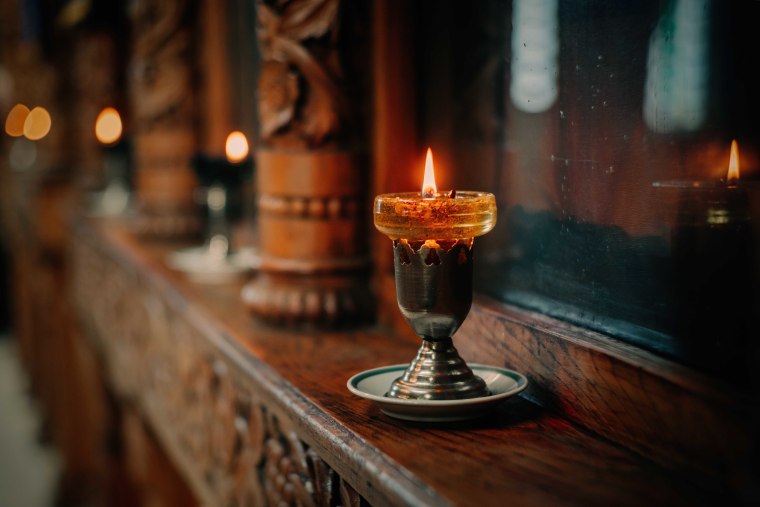
According to Mar, witch spells really aren't much different than conventional prayers.
"If you believe, like many do, that prayer is meaningful and can even be effective, and you can pray for any number of things, then that's pretty much what casting a spell is about. You can pray for positive things, and you can pray for things that are actually pretty greedy," Mar tells TODAY.
For the most part, Blake says evil movie witches — the kind who use spells to cast evil curses on people — really don't exist. But she adds that doing magic spells of any kind requires knowledge and experience.
"Some people have more of a gift for it than others, just like everything else. But you get better with practice," Blake says. "You can also, either accidentally or on purpose, do damage with it. It's a power, and no power is without a double-edged sword."
In fact, a commonly held belief in the pagan community is that whatever you do unto others, you should be prepared to have come back on you.
"It may not be right away, but it'll be down the line. It's sort of a spin on the belief in karma," says Mar. "And that's really powerful. It's taken really seriously."
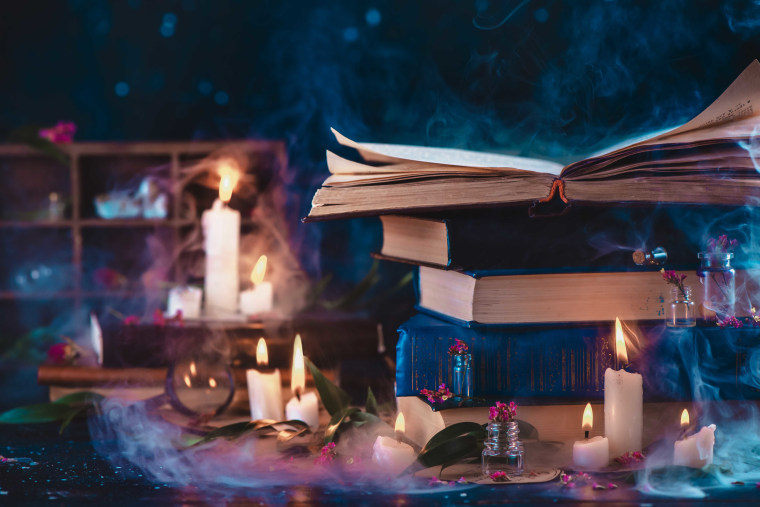
What are covens?
Think of a coven as sort of a church congregation: People who share the same beliefs and regularly gather together in the spirit of prayer and community, minus the church or mosque.
"They are small religious groups," Berger tells TODAY.com.
"They are a group with whom you celebrate religious holidays. In the Witches' case, these are mostly sabbaths, the six holidays throughout the year to denote the changing seasons and their meaning in people’s lives and the moon cycles," Berger says.
Unlike a large congregation typically found in conventional religion, covens tend to be on the smaller side, typically around a dozen or so people, and consist of witches who are able to meet on a regular basis.
Covens also commemorate life passages like the birth of a child, weddings, menopause or death, says Berger. "Some have a long life span, some very short, some could have 5 people some 50 or more," she explains, adding that, for the most part, practitioners of witchcraft tend to be solitary.
The persecution of witches in history
Whether you call them shamen, alchemists, herbalists, Wiccans or witches, the practice of witchcraft, by any name, has been around almost as long as humans have.
"The idea of magic users or people who did magic is in every culture, no matter how far back you go," says Blake.
However, it was around the 15th century that the Christian church deemed witches "willing disciples" of the devil, launching a campaign of hunting and executing presumed witches in Europe and America that lasted nearly 300 years, according to the Library of Congress.
In France alone, there were approximately 2000 witch trials between 1550 and 1700.
And, of course, there was the dark chapter in America's own history when, in 1692, dozens of men and women (as young as four years old) were arrested and charged with suspicion of witchcraft in and around Salem, Massachusetts.
In all, 19 were hanged, five died in jail and one pressed to death with stones.
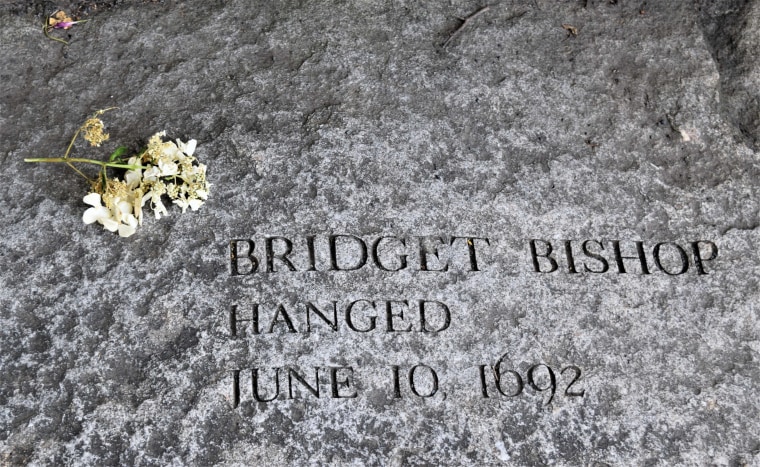
In the years since the witch trials, the unfairly-accused have been exonerated and, in 1957, Massachusetts issued a formal apology for the trials, stating that the proceedings were "shocking" and the result of a "popular hysterical fear of the Devil in the community."
Broomsticks, cauldrons and other myths explained
In movies like "Hocus Pocus," witches often fly around on brooms, wear pointy hats and have at least one trusty black cat as a side kick.
Although Blake's favorite color is black (and she's got five cats), she says the rest of the stereotypical witchy attributes begin and end on the big screen.
"Certainly there are some elements to that sort of mainstream culture," she says, including traditional "witch" fare like candles, stones, crystals, statues, alters and other "tools of the trade," as Blake calls them.
"But I also have a garden, and that garden is part of my spiritual practice. So, that's not something you're going to see in the mainstream — the way I connect to nature," she says.
When it comes to their signature black hats, Mar says that after years of studying and spending time with various covens, few witches, if any, wear them.
"I really never encountered a serious witch who would ever wear a pointy hat, except to be cute, as a 'wink-wink' kind of joke. But never in a ritual scenario," says Mar.
As for riding brooms, Blake says the association is likely linked to ergot, a fungus often used as a hallucinogen back in the Middle Ages, similar to LSD.
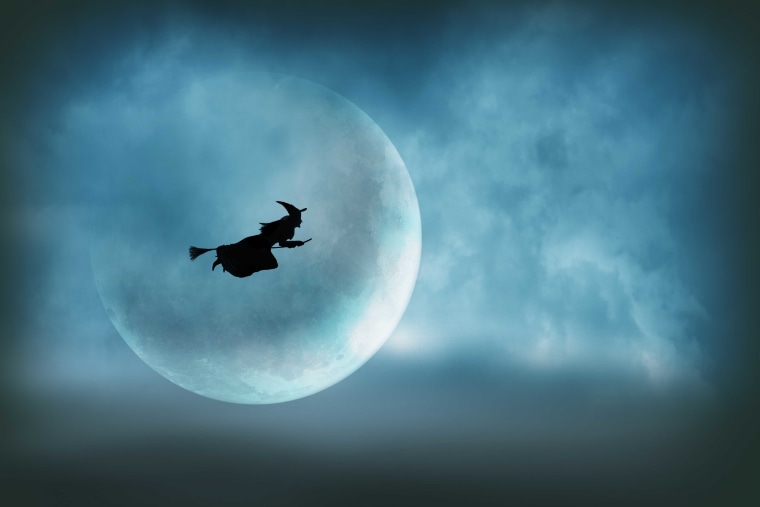
"There was a magical thing that witches supposedly used made up of hallucinogenic herbs, and they might have believed they were actually flying on brooms when they weren't," Blake tells TODAY.
Interestingly enough, when abused, the hallucinogen can result in ergot poisoning, which, according to the U.S. Forest Service, causes convulsions, muscle spasms and hallucinations among other things.
If the symptoms sound exactly like the criteria used to determine if someone was "bewitched" back in the days of the witch trials, it's because they are.
"Most historians today believe that the witchcraft trials that led to thousands of deaths and burnings at the stake in Europe during the Dark Ages were likely related to outbreaks of ergot poisonings," the U.S. Forest Service writes, stating that the victims of the Salem Witch Trials were likely among them.
According to Blake, brooms and cauldrons might also be associated with witches simply because they were items exclusively used by women to clean and cook.
"Back in the days when you went to any house, there'd be a broom leaning against the outside of the house," says Blake.
"Some people associated it with the feminine nature of witches, which is also, partially, how the whole idea of them stirring cauldrons came in. Because the cauldron was basically a big pot that hung over the fire, and dinner was made in it."


